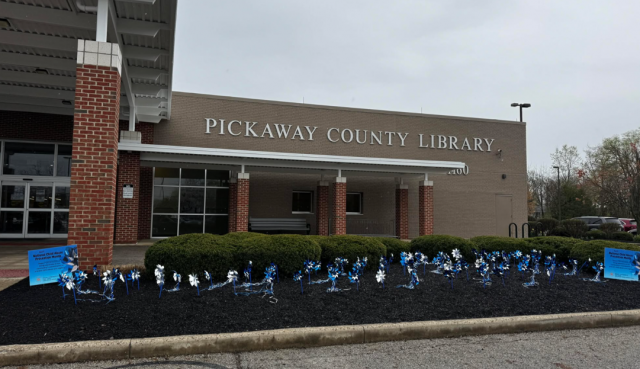
COLUMBUS, Ohio — Dozens of blue pinwheels have been placed in front of the Pickaway County library on North Court Street, placed to represent a stance against child abuse.
April is National Child Abuse Prevention Month (NCAPM), a time dedicated to raising awareness about the importance of preventing child maltreatment and promoting the well-being of children and families across the country. This annual observance is a reminder that building strong communities and supportive networks is key to protecting children from abuse and neglect.
Throughout April, and year-round, organizations, families, and government partners are working together to increase awareness of child abuse prevention and implement proven strategies to support families in need. Activities and awareness campaigns are carried out in partnership with the National Child Abuse Prevention Partners, the Federal Inter-Agency Work Group on Child Abuse and Neglect, and families with lived experience in the child welfare system.
These efforts are supported through the Child Abuse Prevention and Treatment Act (CAPTA), a federal law that provides critical funding to states and organizations. CAPTA funds prevention, assessment, and intervention programs, including demonstration projects operated by nonprofits and tribal organizations. These initiatives help reduce the risk of abuse and improve outcomes for vulnerable children and families.
At the core of these prevention efforts are the Protective Factors Framework and research into Adverse Childhood Experiences (ACEs). Protective factors are conditions that strengthen families, such as nurturing relationships, parenting education, parental resilience, social connections, and accessible support services. When these factors are present, the likelihood of child maltreatment significantly decreases.
Conversely, ACEs—such as abuse, neglect, household substance use, or domestic violence—can have long-term effects on a child’s physical and mental health. Research shows that the greater the number of ACEs a child experiences, the higher their risk for poor outcomes in adulthood. By understanding these experiences, caregivers and professionals can implement trauma-informed practices that build resilience and promote healing.
Prevention strategies are also guided by the social-ecological model, which emphasizes that effective prevention must take place on multiple levels: from family and community support, to organizational practices, to state and national policy. This comprehensive approach acknowledges the many influences on a family’s ability to thrive and protect their children.
For more information on ACEs, protective factors, and resources for preventing child abuse, visit childwelfare.gov or the CDC’s Adverse Childhood Experiences Prevention Strategy.
National Child Abuse Prevention Month is more than a moment of reflection—it’s a call to action for all members of the community to support families, recognize signs of abuse, and work together toward a safer, healthier future for every child.










